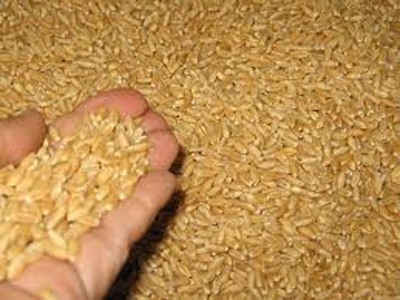Tuesday, 17 March 2015 02:11
 CHICAGO: US wheat futures rose for the sixth time in seven sessions on Monday on concerns about dry conditions in the US Plains hindering growth as the winter wheat crop emerges from dormancy.
CHICAGO: US wheat futures rose for the sixth time in seven sessions on Monday on concerns about dry conditions in the US Plains hindering growth as the winter wheat crop emerges from dormancy.
Corn futures sagged due to pressure from lower-than-expected US export inspections data. Soybeans also dropped as traders anticipated huge US plantings of the oilseed in the coming months.
K.C. hard red winter wheat posted the biggest gain, rallying 2.9 percent as forecasts for rain in key growing areas of the United States forecast that showers would not do enough to recharge soil moisture.
“This crop is in trouble now and may continue to see ratings decline based on current weather forecast,” said Brian Hoops, president of US brokerage Midwest Market Solutions. “It does not look very good after this winter and so far this spring we have not had ideal weather conditions.”
The US Agriculture Department’s National Agricultural Statistics Service will release reports on the condition of winter wheat in some of the biggest production states on Monday afternoon.
“Weather forecasters are looking for a rainfall event this week, but the amount of rainfall may be well short of alleviating the issue,” said Tobin Gorey, director, agricultural strategy, Commonwealth Bank of Australia.
CBOT May wheat futures gained 12 cents to close at $ 5.14 a bushel. K.C. May hard red winter wheat was 15-3/4 cents higher at $ 5.55 a bushel.
Weakness in the US dollar, which makes US exports relatively cheaper to overseas buyers, also boosted wheat and provided cover for investment funds looking to get out of short positions.
“To see a spike higher is not that surprising,” said Karl Setzer, market analyst at MaxYield Cooperative. “We are seeing some buying interest in there.”
CBOT May corn ended down 1-1/2 cents to $ 3.79 a bushel and CBOT May soybeans fell 4-3/4 cents to $ 9.69-1/4 a bushel.
The USDA said on Monday morning that weekly export inspections of corn were 735,311 tonnes, down from 1.18 million tonnes a week ago and below the low end of trade forecasts ranging from 900,000 to 1.1 million tonnes.
The decline in soybeans was capped by technical buying after the benchmark May contract briefly fell below the low end of its 20-day Bollinger range, a level the contract has not closed below since January.
Copyright Reuters, 2015





























